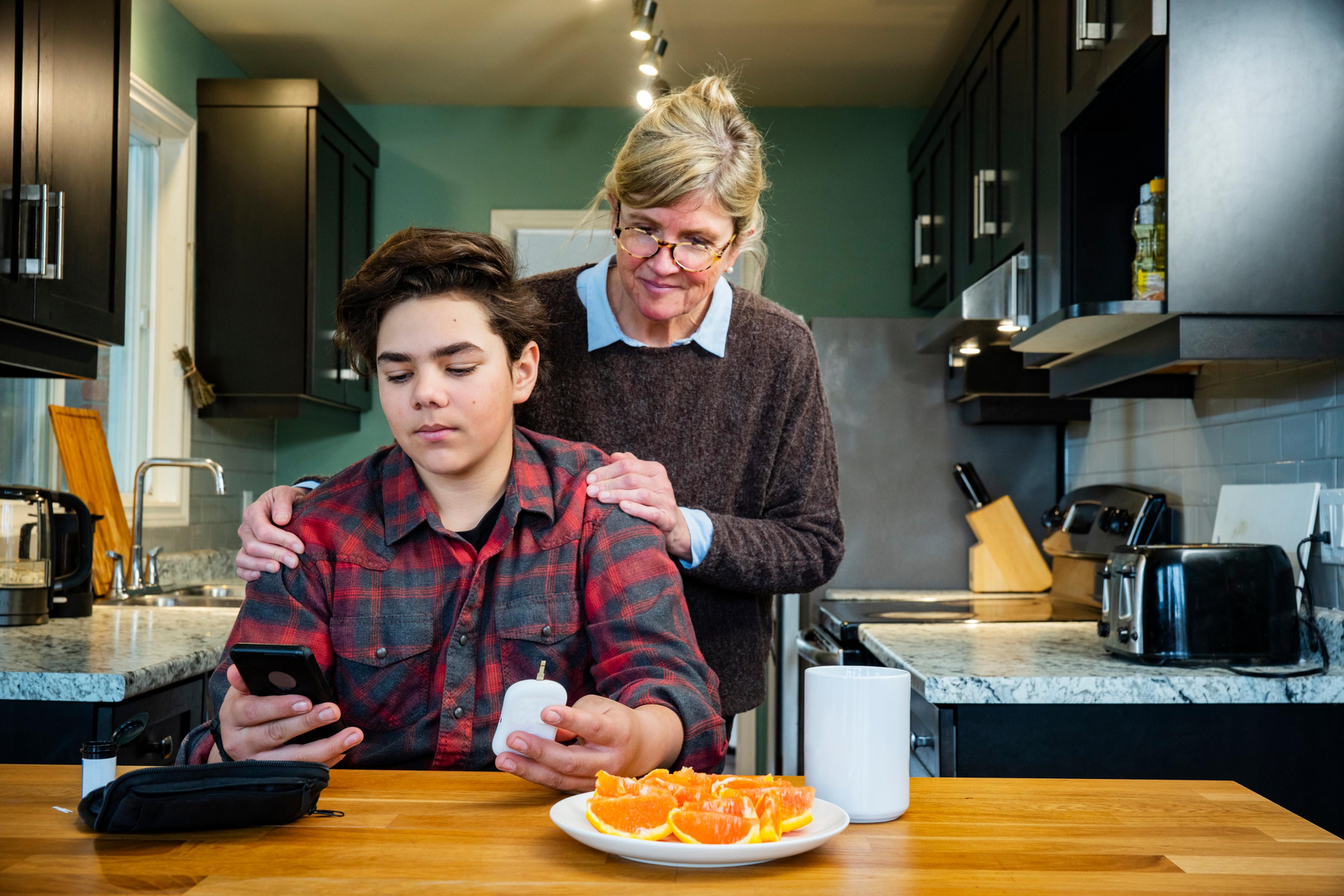DIY Garden for Kids: How to Grow a Window Garden
A Healthier Michigan
| 4 min read

Creating a garden in the window with kids can be a fun project to help get them involved in a productive hobby. It can also promote healthy eating habits. The joy of watching a seed grow into something delicious can also help encourage children to try new foods.
Whether you want to make a DIY (do-it-yourself) window for the kitchen or anywhere else in the house, here's how to get started.
DIY garden for kids: materials to gather
Here are the materials you need to get started:
- A clear storage bin at least six-inch deep (the bigger the better, to help roots grow).
- A small bag of organic potting soil with compost and granular organic fertilizer in it (these can be mixed in separately if needed).
- Seeds of your choice.
- Fairies, dragons or other small toys to decorate your garden.
Common indoor plants for your garden window: selecting seeds
- Chia seeds: Growing chia with kids is easy and fun. Start a chia garden and let children add their own twist by including some favorite toy trinkets such as dinosaurs, figurines or fairies.
- Lettuce: When planting, use your finger to poke holes into the soil and plant three inches apart from another. Lettuce is high in folate and iron, which both help boost a child’s energy.
- Arugula: This plant sprouts in just a few days and can be ready to eat in as little as three weeks. Because it is quick-growing, arugula needs plenty of water. Arugula is ready to harvest when leaves are 4 to 6 inches long.
- Radishes: Radishes are a great plant for young gardeners to grow. If you have impatient kids, this vegetable can be ready to top your dinner salad in as few as 21 days.
- Carrots: This favorite vegetable packs a lot of nutrients with very few calories and makes for a great kids snack. Allow three inches between each row of carrot seedlings so the carrot roots can grow without crowding. Carrots can take several weeks to sprout, so keep them moist until they come up.
Tips to build a window herb garden
Herbs such as cilantro, basil, oregano and chives are another great choice for window gardens. You’ll want to keep them in a partially shaded area and water them often. Different herbs are an easy way to add in antioxidants and vitamins kids need while giving foods a burst of flavor.
Whether you're going with an herb garden or planting any of the seeds we mentioned above, here's how to embark on the four-step building process:
- Pour soil in the pot, leaving about three to four inches on top for our plants to grow. We recommend using compost fertilizer to plant. The more organic the soil the better your garden will grow. Make sure there are holes in the bottom of the pot. If there aren’t, parents can use a drill to add them.
- Plant your choice of seeds throughout the window garden. Follow instructions on your seed packet.
- Sprinkle a layer of dirt over top of your seeds, just enough to cover them.
- Children can add some of their favorite trinkets on the top layer of soil to help make the window garden their own.
Choosing the right place for your window garden
Location and light play a crucial role in the life of an indoor garden. The success of your window garden depends on choosing a space inside that has lots of light – something that can be challenging during Michigan’s fall and winter months. The south or west side of a house is generally a good choice for a window garden. Place the pot as close as possible to the window, except on the coldest days.
Supplemental light is an option when window light is limited. If using supplemental light, make sure the light is directly over the plant. Remember, warmth is also key for plants to survive, so avoid rooms that have cold temperatures like basements or garages.
Maintaining your plants
After planting, your window garden will require proper upkeep to be successful. Most importantly, make sure the plants are kept hydrated (but not overly watered). The key is to water plants until the water comes out the bottom of the pot. Allow the top of the soil to dry out between waterings. When the top half inch of the soil is dry, it’s time to water again. However, recently planted seeds need to be kept moist until they sprout.
Sunlight and temperature play an equal role in making your window garden successful. Make sure soil temperature does not drop below 70 degrees. If plants grow in with brown spots or appear to be wilting, it’s best to remove them in case they carry a disease or pest.
You don’t have to be a professional gardener to enjoy the benefits of home grown produce while having fun with your kids. Gardening can be a relaxing hobby the whole family can get involved in. With this simple DIY window garden you can enjoy the benefits of a Michigan garden all year long.
Read on:
- Can Gardening Improve Mental Health?
- Does Apple Cider Have Health Benefits?
- The Importance of Tummy Time for Babies
Photo credit: Getty Images





